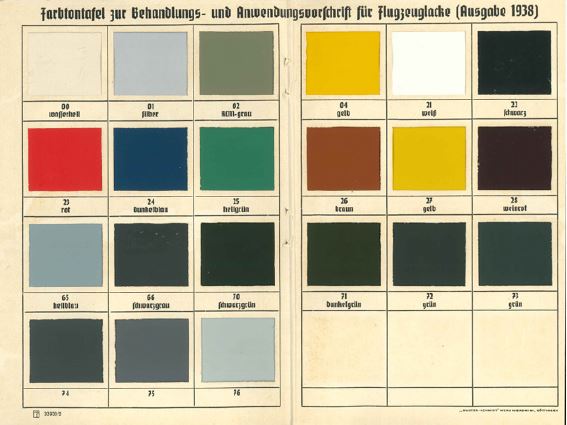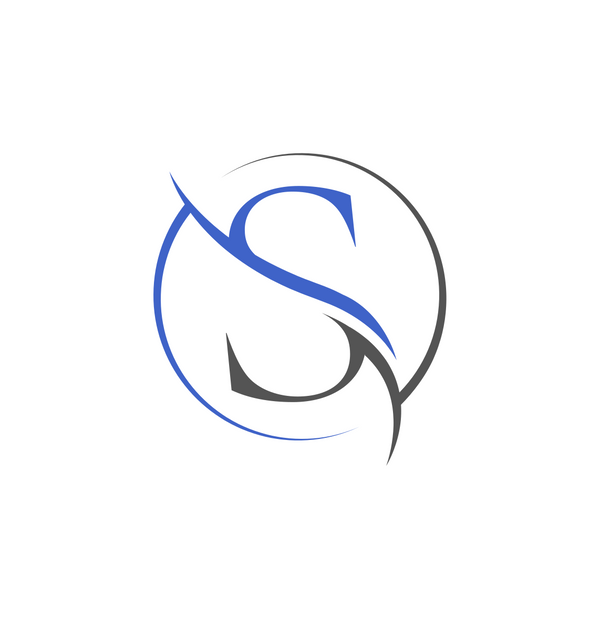
German WW2 Luftwaffe RLM Paint Colours: A Guide for Scale Modelers
Share
When modeling German WW2 aircraft, one of the most important aspects of achieving historical accuracy is using the correct Luftwaffe RLM paint colours. These standardized colours were issued by the Reichsluftfahrtministerium (RLM) — the German Air Ministry — and evolved throughout the war in response to changing operational requirements and material availability.
In this guide, we’ll break down the key RLM colours, their usage on specific aircraft types, and how they changed from the early war period through to the late war years.
What Are RLM Colours?
RLM colours were a standardized system created to ensure consistency across German military aircraft production. Each colour was assigned a number (e.g., RLM 02, RLM 74, etc.) and was used for both camouflage and interior finishes. These paints were typically matt or semi-matt and were applied at the factory or in field workshops depending on the unit's needs.
Key Documents That Specified RLM Colours:
L.Dv. 521/1 — Luftwaffe Dienstvorschrift 521/1, also known as Directive for the Painting of Aircraft, was first issued in 1936 and revised multiple times. This was the most important directive, listing the official RLM colour numbers, their names, and instructions on how and where they were to be applied — for example, upper surfaces, undersides, and cockpits. It served as the master guide for painting aircraft across the Luftwaffe.
RLM-Farbkarte — These were official colour chip charts distributed to manufacturers and maintenance units, providing standardized samples for each RLM colour to ensure uniformity in paint mixing and application.
Technische Lieferbedingungen (TL) — These “Technical Delivery Conditions” outlined specifications for aircraft and component manufacturing, including paint types, camouflage schemes, and material usage. Examples like TL 226 dictated specific colour usage for designated aircraft areas.
Field Directives and Orders — In the later war years, the Luftwaffe often issued ad-hoc camouflage orders due to shifting operational needs and supply shortages. These field directives frequently overrode standard colours, resulting in improvised patterns, especially during 1944–45.
Official RLM Colour Standards: L.Dv. 521/1 (1941)
One of the most important historical documents for Luftwaffe colours is L.Dv. 521/1, issued on November 8, 1941. This directive officially standardized RLM paint colours and camouflage schemes across all military aircraft types. It detailed the use of RLM 70/71 for bombers and RLM 74/75/76 for fighters — which became the iconic mid-war Luftwaffe camouflage palette.
For modelers, this regulation remains a critical reference when selecting authentic colours for aircraft from the 1941–1943 period.
What is Sammelmitteilung Nr. 2?
Sammelmitteilung Nr. 2, meaning “Consolidated Memo No. 2,” was issued by the RLM on August 15, 1944. This directive reflected a major strategic shift in camouflage doctrine during the final phase of the war.
It replaced earlier camouflage instructions and introduced a new standard using RLM 81, RLM 82, and a revised RLM 76. These colours were to be applied to fighters and other frontline aircraft in an effort to streamline production and adapt to increasingly difficult operational conditions — including Allied air superiority and material shortages.
The directive also called for the phasing out of RLM 74 and RLM 75, previously used on fighters, and promoted simplified camouflage techniques, such as soft demarcation lines and heavy field mottling, often using whatever paint was on hand.
Why it matters for modelers: Sammelmitteilung Nr. 2 is a vital document when depicting late-war Luftwaffe aircraft. It explains the transition from the greys of mid-war schemes to the new green/brown tones seen on aircraft like the Fw 190D, Bf 109G-10/K-4, and Me 262.
Early War Luftwaffe Colours (1939–1941)
In the early years of World War II, aircraft such as the Bf 109E, He 111, and Ju 87 Stuka were painted in high-contrast patterns suited for central Europe. Common colours included:
RLM 65 Hellblau for undersides
RLM 70 Schwarzgrün and RLM 71 Dunkelgrün for upper surfaces
RLM 02 Grau in cockpits and some internal fuselage areas
These schemes dominated during the campaigns in Poland, France, and the Battle of Britain.

A downed Ju 88 in RLM 70, RLM 71 for the upper surfaces and RLM 65 under surfaces.
Mid-War Camouflage (1941–1943)
As Luftwaffe operations expanded, camouflage evolved to suit new environments like the Eastern Front and North Africa. Commonly used colours included:
RLM 74 Graugrün and RLM 75 Grauviolett for fighter upper surfaces
RLM 76 Lichtblau for undersides
RLM 78 Himmelblau, RLM 79 Sandgelb, and RLM 80 Olivgrün for desert operations
These schemes often featured mottling or soft-edged camouflage to improve concealment at lower altitudes. Aircraft like the Fw 190A and Bf 109F/G used these colours extensively.

A Messerschmitt Bf 109 E of JG 27 with RLM 79 and RLM 80 upper surfaces and RLM 76 under surfaces.

A Messerschmitt Bf 109 E witn RLM 74 and RLM 75 upper surfaces and RLM 76 under surfaces.
Late War Camouflage (1944–1945)
In the final phase of the war, Luftwaffe paint schemes became increasingly inconsistent due to production pressures. Field-applied camouflage and mismatched paint stocks became the norm.
Typical late-war colours included:
RLM 81 Braunviolett and RLM 82 Hellgrün for upper surfaces
RLM 76 in several tone variations for undersides
RLM 83, a dark blue used primarily on maritime aircraft and referenced in Sammelmitteilung Nr. 2
RLM 84, an unofficial term often used to describe greenish-yellow or pale light green late-war tones
Aircraft such as the Do 335, Me 262, and Fw 190D-9 wore these hastily applied patterns, sometimes including exposed primer or unpainted panels.

A Do 335 with RLM 81 and RLM 82 upper surfaces and RLM 76 under surfaces.
Aircraft-Specific RLM Paint Examples
Messerschmitt Bf 109
Bf 109E (Early War): RLM 70/71 over 65
Bf 109G (Mid/Late War): RLM 74/75 over 76, transitioning to 81/82/76 or mottled variations
Focke-Wulf Fw 190
Fw 190A (Mid-War): RLM 74/75/76
Fw 190D-9 (Late War): RLM 81/82 over 76 with extensive mottling
Messerschmitt Me 262
Me 262A (Late War): RLM 81/82 over 76, often with simplified factory or field camouflage
Heinkel He 111
Early War: RLM 70/71 over 65
Later War: Some variants showed 74/75/76 or mixed transitional schemes
Matching RLM Colours for Scale Modeling
Today, companies like AK Interactive, Mr. Hobby, Vallejo, Tamiya, and MIG Ammo produce accurate matches for RLM paints. Among them, AK Real Colors is a standout line — a lacquer-based range developed with historical precision, offering superb sprayability and colour accuracy.
Keep in mind that slight variations in hue were common in real life due to field mixing, weathering, and material substitutions — something worth considering for realism.
To choose the best colour for your build, reference historical photos, check FS/RAL equivalents provided by paint brands, and consider the aircraft’s time period and theater of operations.
Final Thoughts
Understanding Luftwaffe RLM colours adds depth and accuracy to any WW2 aircraft model. Whether you're building a Battle of Britain-era Bf 109E or a last-ditch Me 262, selecting the right camouflage paints tells a more authentic story of the Luftwaffe’s evolution.
When in doubt, consult historical photos, unit-specific records, and original documents like L.Dv. 521/1 and Sammelmitteilung Nr. 2 — but remember, even the Luftwaffe had to improvise in wartime.
